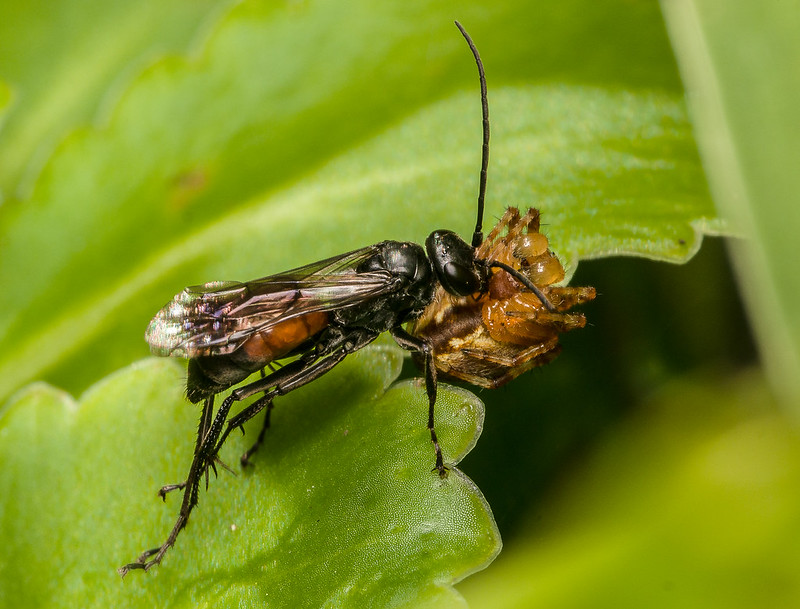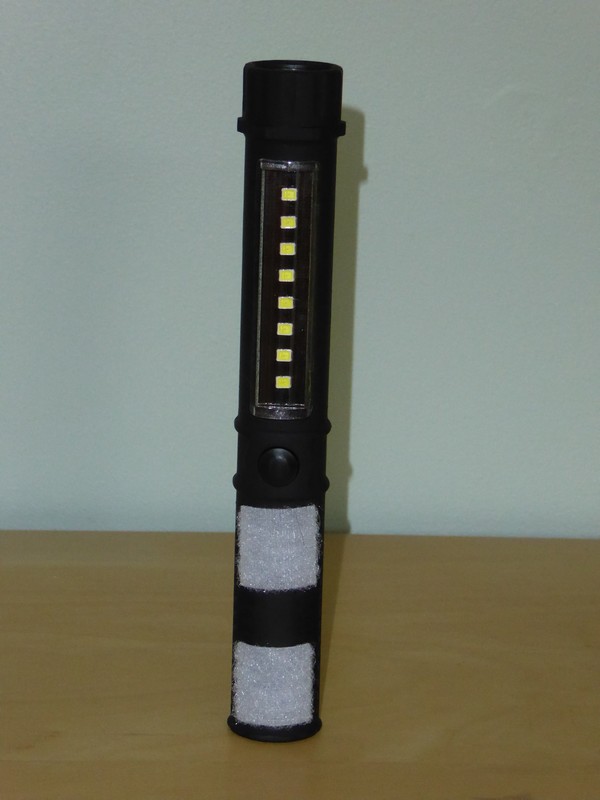GardenersHelper
In Memoriam
- Messages
- 6,344
- Name
- Nick
- Edit My Images
- Yes
I did an experiment today which clarified an issue I've been aware of for some time - the extra flash power needed when using a larger sensor camera.
I have two Metz 58 AF-2 flashes, one Canon fit and one Panasonic fit. I used the Canon fit one on the 70D with the Sigma 105 Macro and the Panasonic fit one on the FZ200.
I captured three images with each camera, with my lasagne tin diffuser on the flash. For the first two FZ200 shots I used the Canon 500D closeup lens, and for the third shot the Raynox 150.
I used f/22 on the 70D and f/8 on the FZ200 in order to get roughly the same depth of field (the 70D would need to be a bit smaller than f/22 to give the same DOF as the FZ200 at f/8, but f/22 is the minimum aperture for the Sigma 105).

70D vs FZ200 flash power comparison shots by gardenersassistant, on Flickr
I set the flash level manually, and adjusted it to get as near as I could to the same brightness for each pair of shots. This was a bit rough and ready because I had to go by what I could see comparing the shots on the LCD.
The images were captured raw, imported into Lightroom using my default import parameters (which make no changes to brightness, highlights, shadows etc) and exported to JPEG.
I kept the FZ200 at base ISO 100 and reduced the flash power as appropriate. I had to use maximum flash power for the 70D, and also had to raise the ISO up from base ISO 100.
Starting at the top left of the above illustration, the working distance with the 70D was a large 900mm in order to get the whole of the box in the frame. (The box is about 5 inches square.) Because of the rapid drop off of light with distance I had to raise the ISO almost three stops, to ISO 640. To the right of that is the FZ200 version, using the Canon 500D closeup lens. The working distance was much smaller, about 370mm, and I could keep the FZ200 at base ISO and use one 1/4-- power, almost 1/8. Since ISO 640 is 2 and 2/3 stops up from ISO 100, and 1/4-- is 2 and 2/3 stops down from full 1/1 flash power, there was an overall difference of 5 and 1/3 stops between the two cameras' illumination requirements.
For the middle shot the working distance was about the same for the two setups - unchanged at 370mm for the FZ200 with Canon 500D, and down to 350mm for the 70D with Sigma 105. Even so, using full flash power with 70D I still had to raise the ISO to 200. The FZ200 with 500D remained at the same level of 1/4--. In this case there was an overall difference of 3 and 2/3 stops between the two cameras' illumination requirements.
For the third shot I had to raise the ISO up a notch for the 70D even though the working distance had reduced to 120mm or so. I think this was because the increase in illumination from the decreased distance from the flash was more than offset by the decrease in effective aperture caused by the increase in magnification. For the FZ200 the working distance reduced by a similar amount, increasing the level of illumination, but there was no offsetting decrease in effective aperture because effective aperture is unaffected by magnification when using achromats. So for the FZ200 with Raynox 150 I could decrease the flash power by 1 and 1/3 stops from 1/4-- to 1/16 compared to the level needed with the 500D. In this case there was an overall difference of 5 and 1/3 stops between the two cameras' illumination requirements.
While capturing the shots didn't think of the effect of magnification on effective aperture. A more like for like comparison would have been to increase the aperture of the Sigma 105 to the point where the DOF matched the f/8 DOF on the FZ200. With a magnification of 1:1 this would have needed an increase of perhaps 1 and 2/3 stops, which would have reduced the difference in the two cameras' ilumination requirements to 3 and 2/3 stops.
The bottom line? For a given DOF, a camera with a small sensor needs much less flash power delivered to the scene than a larger sensor camera. Using achromats on the small sensor camera and a macro lens on the larger sensor camera increases this difference. The difference in power requirements means that, for a given flash unit and diffuser, sequences of flash shots can be captured faster with a smaller sensor camera because recycle times are shorter.
I have two Metz 58 AF-2 flashes, one Canon fit and one Panasonic fit. I used the Canon fit one on the 70D with the Sigma 105 Macro and the Panasonic fit one on the FZ200.
I captured three images with each camera, with my lasagne tin diffuser on the flash. For the first two FZ200 shots I used the Canon 500D closeup lens, and for the third shot the Raynox 150.
I used f/22 on the 70D and f/8 on the FZ200 in order to get roughly the same depth of field (the 70D would need to be a bit smaller than f/22 to give the same DOF as the FZ200 at f/8, but f/22 is the minimum aperture for the Sigma 105).

70D vs FZ200 flash power comparison shots by gardenersassistant, on Flickr
I set the flash level manually, and adjusted it to get as near as I could to the same brightness for each pair of shots. This was a bit rough and ready because I had to go by what I could see comparing the shots on the LCD.
The images were captured raw, imported into Lightroom using my default import parameters (which make no changes to brightness, highlights, shadows etc) and exported to JPEG.
I kept the FZ200 at base ISO 100 and reduced the flash power as appropriate. I had to use maximum flash power for the 70D, and also had to raise the ISO up from base ISO 100.
Starting at the top left of the above illustration, the working distance with the 70D was a large 900mm in order to get the whole of the box in the frame. (The box is about 5 inches square.) Because of the rapid drop off of light with distance I had to raise the ISO almost three stops, to ISO 640. To the right of that is the FZ200 version, using the Canon 500D closeup lens. The working distance was much smaller, about 370mm, and I could keep the FZ200 at base ISO and use one 1/4-- power, almost 1/8. Since ISO 640 is 2 and 2/3 stops up from ISO 100, and 1/4-- is 2 and 2/3 stops down from full 1/1 flash power, there was an overall difference of 5 and 1/3 stops between the two cameras' illumination requirements.
For the middle shot the working distance was about the same for the two setups - unchanged at 370mm for the FZ200 with Canon 500D, and down to 350mm for the 70D with Sigma 105. Even so, using full flash power with 70D I still had to raise the ISO to 200. The FZ200 with 500D remained at the same level of 1/4--. In this case there was an overall difference of 3 and 2/3 stops between the two cameras' illumination requirements.
For the third shot I had to raise the ISO up a notch for the 70D even though the working distance had reduced to 120mm or so. I think this was because the increase in illumination from the decreased distance from the flash was more than offset by the decrease in effective aperture caused by the increase in magnification. For the FZ200 the working distance reduced by a similar amount, increasing the level of illumination, but there was no offsetting decrease in effective aperture because effective aperture is unaffected by magnification when using achromats. So for the FZ200 with Raynox 150 I could decrease the flash power by 1 and 1/3 stops from 1/4-- to 1/16 compared to the level needed with the 500D. In this case there was an overall difference of 5 and 1/3 stops between the two cameras' illumination requirements.
While capturing the shots didn't think of the effect of magnification on effective aperture. A more like for like comparison would have been to increase the aperture of the Sigma 105 to the point where the DOF matched the f/8 DOF on the FZ200. With a magnification of 1:1 this would have needed an increase of perhaps 1 and 2/3 stops, which would have reduced the difference in the two cameras' ilumination requirements to 3 and 2/3 stops.
The bottom line? For a given DOF, a camera with a small sensor needs much less flash power delivered to the scene than a larger sensor camera. Using achromats on the small sensor camera and a macro lens on the larger sensor camera increases this difference. The difference in power requirements means that, for a given flash unit and diffuser, sequences of flash shots can be captured faster with a smaller sensor camera because recycle times are shorter.
Last edited:














